How to Ripen Green Tomatoes in August UK: Expert Methods for Perfect Results
August in the UK brings cooler nights and shorter days, potentially leaving you with plenty of green tomatoes. Don't worry - with the right techniques, you can successfully ripen these green treasures both on the plant and indoors. Learn proven methods to maximize your tomato harvest this season.
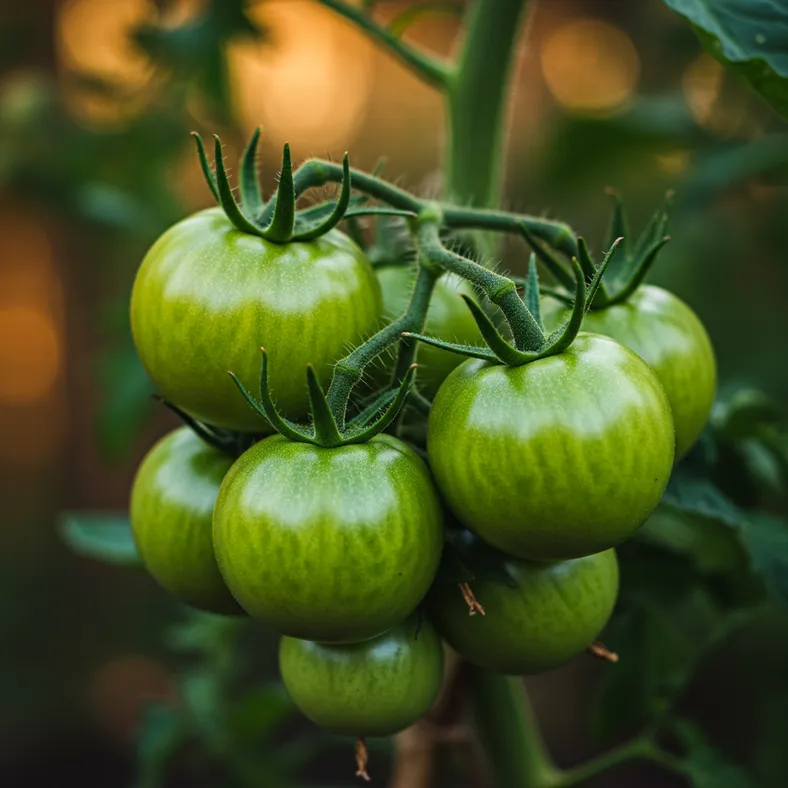
- Understanding Tomato Ripening in August UK
- Maximizing On-Plant Ripening in August
- The Paper Bag Ripening Method
- The Cardboard Drawer Method
- Windowsill Ripening Technique
- Whole Plant Harvesting Method
- Troubleshooting Common Ripening Problems
- Essential Tools and Supplies for Tomato Ripening
- Timing Your Harvest for Best Results
- Post-Ripening Storage and Usage
August in the UK marks a crucial turning point for tomato growers. As daylight hours begin to shorten and temperatures start their gradual decline, many gardeners find themselves with plants laden with green tomatoes that seem reluctant to ripen. The shorter days and cooler nights characteristic of late summer can significantly slow the ripening process, leaving you wondering whether your green tomatoes will ever turn that perfect shade of red.
The good news is that with the right techniques and timing, you can successfully ripen green tomatoes both on the plant and indoors. Understanding how tomatoes ripen and what conditions they need is key to maximizing your harvest, even as the growing season begins to wind down. Whether you're dealing with a few stubborn green fruits or an entire plant full of unripe tomatoes, this comprehensive guide will equip you with proven methods to ensure none of your hard work goes to waste.
Understanding Tomato Ripening in August UK
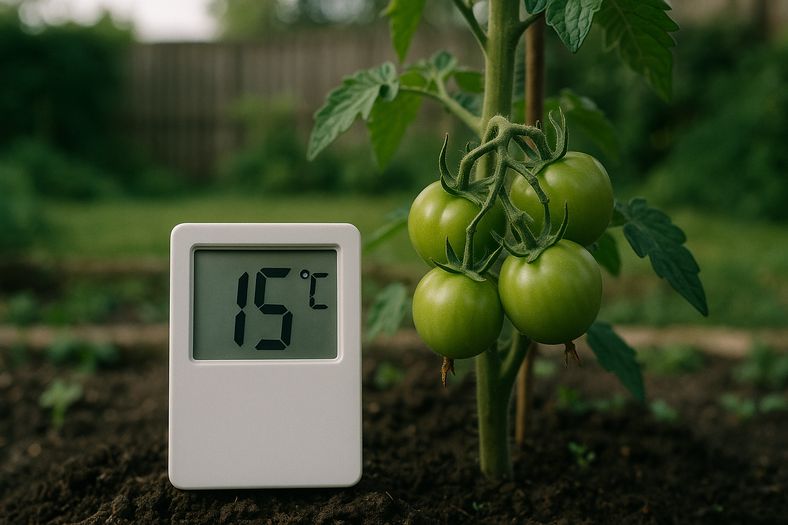
Tomato ripening is fundamentally a chemical process triggered by temperature, light, and the plant hormone ethylene. In the UK, August weather patterns create unique challenges for tomato growers. Whilst daytime temperatures may still reach comfortable levels around 18-22°C, nighttime temperatures often drop to 10-15°C, significantly slowing the ripening process.
The science behind tomato ripening reveals that temperatures below 13°C virtually halt the process, whilst temperatures above 30°C can actually prevent proper colour development. August's gradually decreasing daylight hours also impact photosynthesis, reducing the plant's energy production needed for fruit development.
Green tomatoes in August fall into different categories of ripeness. Mature green tomatoes - those that have reached full size and show a slight yellowish tinge - have the best chance of ripening successfully. Immature green tomatoes, still small and hard, are less likely to develop proper flavour and texture even if they do change colour.
Understanding your local microclimate is crucial. South-facing walls, sheltered courtyards, and greenhouse environments can maintain higher temperatures longer into the season, giving your tomatoes extra time to ripen naturally on the plant.
Maximizing On-Plant Ripening in August
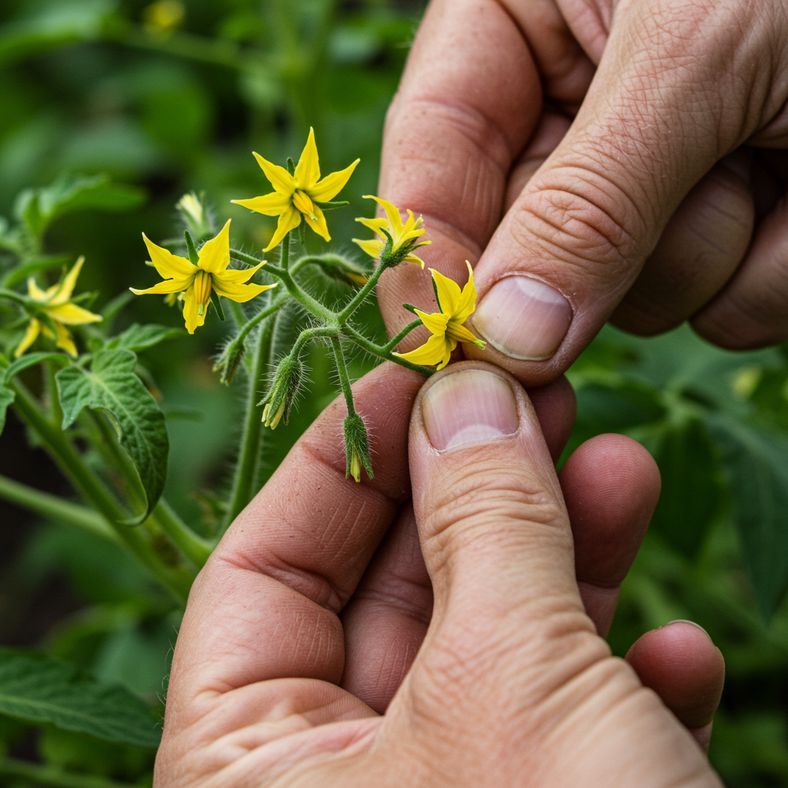
Before resorting to indoor ripening methods, several techniques can help encourage your green tomatoes to ripen whilst still on the plant. These methods focus on redirecting the plant's energy and maximizing exposure to warmth and light.
Remove Unnecessary Growth: Start by pinching out all new flower clusters and side shoots. These will never develop into mature fruit before autumn frosts, so removing them channels the plant's energy into ripening existing tomatoes. Cut away any leaves that are shading developing fruit clusters, allowing maximum light penetration.
Stop the Growing Tip: Cut through the main stem about two leaves above your highest fruit truss. This technique, known as 'stopping', prevents further upward growth and concentrates the plant's resources on fruit development.
Root Restriction Technique: Gently lift outdoor plants slightly to break some feeder roots, or reduce watering for container plants. This mild stress signals the plant to focus on seed production, accelerating fruit ripening.
Enhance Warmth and Light: Position reflective materials like white boards or mirrors to bounce additional light onto fruit clusters. For greenhouse plants, ensure maximum ventilation during the day whilst closing vents at night to retain heat.
These techniques can extend your outdoor ripening window by 2-3 weeks, potentially allowing many August green tomatoes to ripen naturally before the first frosts arrive in late September or October.
The Paper Bag Ripening Method
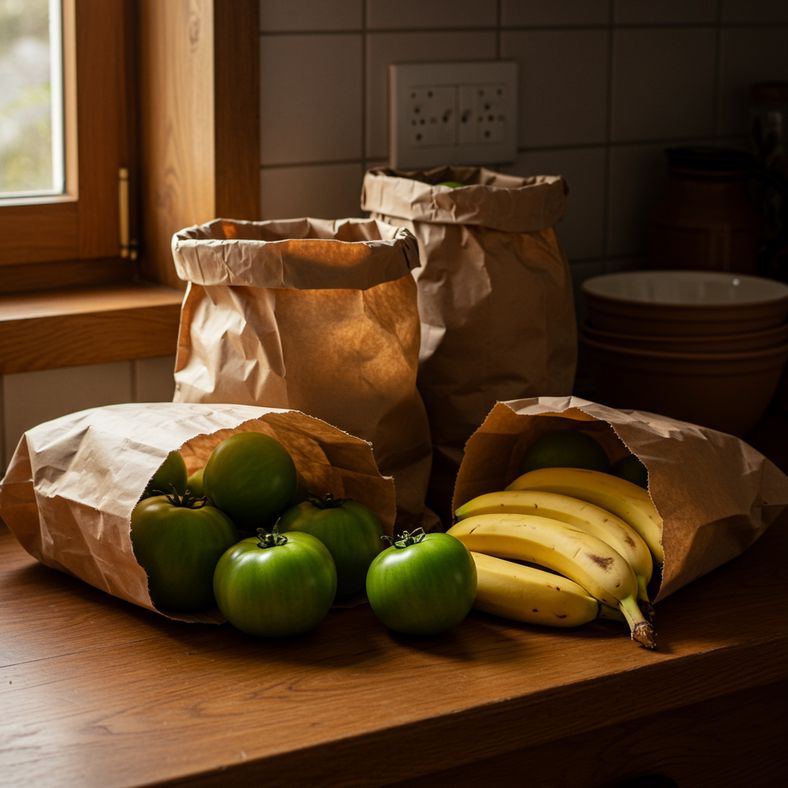
One of the most effective indoor ripening techniques involves using the natural ethylene gas that tomatoes produce. This method works particularly well for mature green tomatoes that show signs of beginning to turn.
Selecting Suitable Tomatoes: Choose firm, unblemished green tomatoes that have reached full size. Avoid any with soft spots, cracks, or signs of disease, as these will likely rot rather than ripen properly.
The Basic Technique: Place 3-5 similar-sized tomatoes in a brown paper bag with a ripe banana or apple. These fruits produce high levels of ethylene gas, which triggers the ripening process in the green tomatoes. Fold the bag closed loosely to allow some air circulation whilst trapping the ethylene.
Storage Conditions: Keep bags in a warm location around 18-21°C - an airing cupboard, warm kitchen, or heated conservatory work well. Check daily and remove any tomatoes that show signs of ripening or deterioration.
Expected Timeline: Depending on the initial maturity, tomatoes typically begin showing colour changes within 3-7 days. Full ripening usually occurs within 1-2 weeks.
This method typically achieves 70-80% success rates with mature green tomatoes, making it one of the most reliable techniques for UK gardeners dealing with end-of-season harvests.
The Cardboard Drawer Method
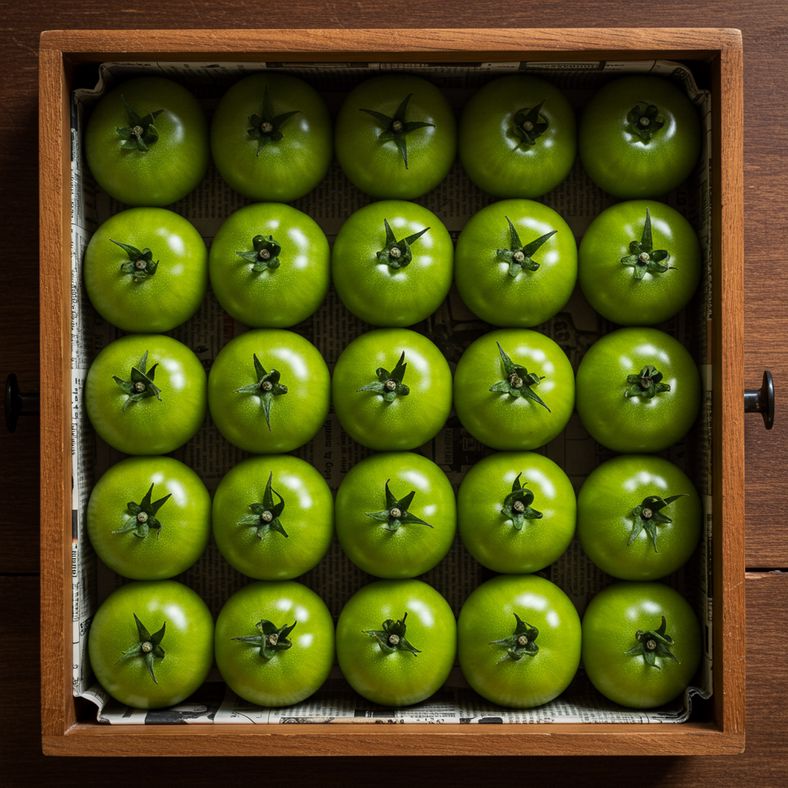
For larger quantities of green tomatoes, the cardboard drawer method offers an excellent solution that's both space-efficient and highly effective. This technique has been successfully used by UK gardeners for generations.
Setting Up Your Ripening Station: Line shallow cardboard boxes or drawers with several layers of newspaper. The cardboard provides insulation whilst the newspaper absorbs excess moisture that could lead to rot. Avoid plastic containers, which can trap moisture and encourage fungal problems.
Arranging the Tomatoes: Place tomatoes in single layers, ensuring they don't touch each other. This prevents rapid spread of any rot and allows for easy monitoring. Separate different varieties and sizes, as ripening rates can vary significantly.
Optimal Environment: Store boxes in a consistently warm area around 15-20°C. Spare bedrooms, loft spaces with heating, or heated garages work well. Avoid areas with temperature fluctuations, such as unheated conservatories or outbuildings.
Monitoring and Maintenance: Check every 2-3 days, removing any tomatoes showing colour changes or signs of deterioration. Replace newspaper if it becomes damp. Turn tomatoes occasionally to ensure even ripening.
Harvesting Results: This method typically ripens 60-75% of suitable green tomatoes over 2-4 weeks, making it ideal for processing large end-of-season harvests efficiently.
Windowsill Ripening Technique

The windowsill method combines natural light with controlled temperature, making it perfect for small quantities of green tomatoes or those that are already showing early signs of turning.
Choosing the Right Location: Select a south-facing windowsill that receives maximum daylight but isn't exposed to direct, intense afternoon sun, which can cause uneven ripening or skin damage. East or west-facing windows also work well, providing gentler light conditions.
Preparation and Placement: Place tomatoes directly on the windowsill or on a tray lined with kitchen paper. Space them apart to allow air circulation and prevent touching. Rotate tomatoes daily to ensure even exposure to light and prevent flat spots.
Temperature Management: Monitor temperatures carefully - windowsills can become very hot on sunny days or quite cool at night. If temperatures exceed 25°C, move tomatoes away from direct sun. During cold spells, consider moving them to a warmer location overnight.
Enhanced Technique: Place a banana or ripe tomato nearby to boost ethylene production. Some gardeners report success with placing a small mirror behind the tomatoes to reflect additional light onto the fruit.
Expected Results: This method works best for tomatoes that are already beginning to show colour changes. Success rates can reach 85-90% for suitable fruits, with visible changes often appearing within 3-5 days.
For gardeners with limited space or just a few green tomatoes to ripen, this traditional method remains one of the most reliable and convenient options.
Whole Plant Harvesting Method
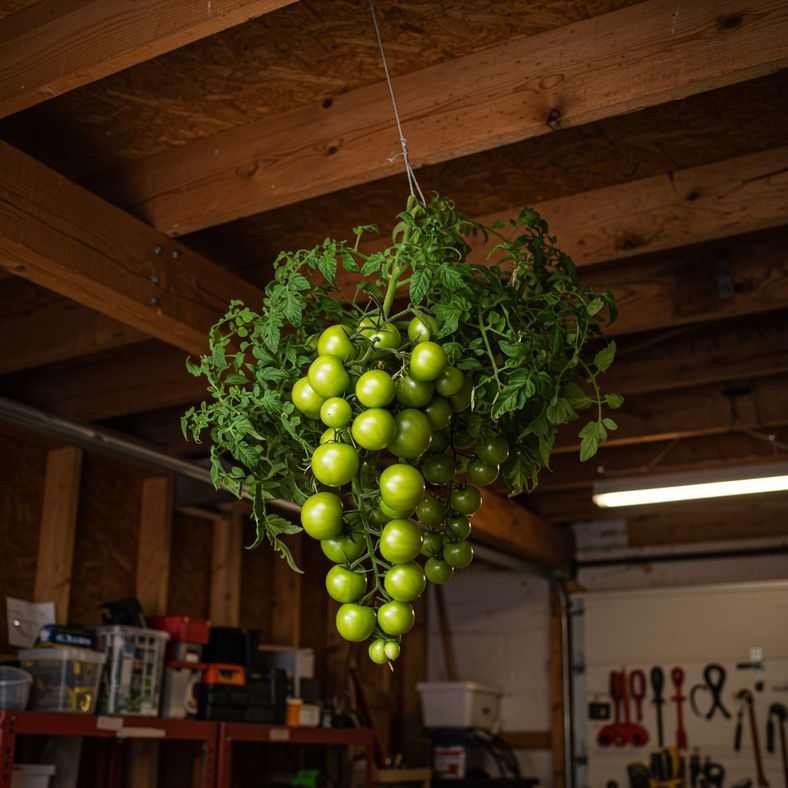
When weather conditions deteriorate rapidly or frost threatens, harvesting entire tomato plants can save a significant portion of your crop. This method works particularly well for cordon varieties grown in the greenhouse or sheltered locations.
Timing the Harvest: Monitor weather forecasts carefully. When nighttime temperatures consistently drop below 10°C or frost is predicted within 7 days, it's time to take action. Don't wait until the last minute, as stressed plants produce lower-quality fruit.
Harvesting Technique: Cut plants at soil level in the morning when stems are fully hydrated. For greenhouse plants, you can uproot entire plants with some soil attached to their roots. Remove all foliage except the small leaves directly attached to fruit clusters, as these help continue feeding the developing tomatoes.
Hanging Method: Suspend whole plants or large branches upside down in a warm, dry location such as a heated garage, basement, or spare room. The temperature should remain between 15-20°C with good air circulation to prevent fungal issues.
Alternative Setup: If hanging isn't practical, lay plants on their sides on clean newspaper or cardboard, ensuring fruit clusters don't touch the ground. Turn plants every few days to prevent flat spots and ensure even ripening.
Success Factors: This method can successfully ripen 40-60% of green tomatoes, with the best results from plants that were healthy at harvest. Larger, more mature fruits have higher success rates than small, immature ones.
Many experienced UK gardeners report excellent results with this traditional method, particularly when combined with providing optimal temperature and humidity conditions.
Troubleshooting Common Ripening Problems
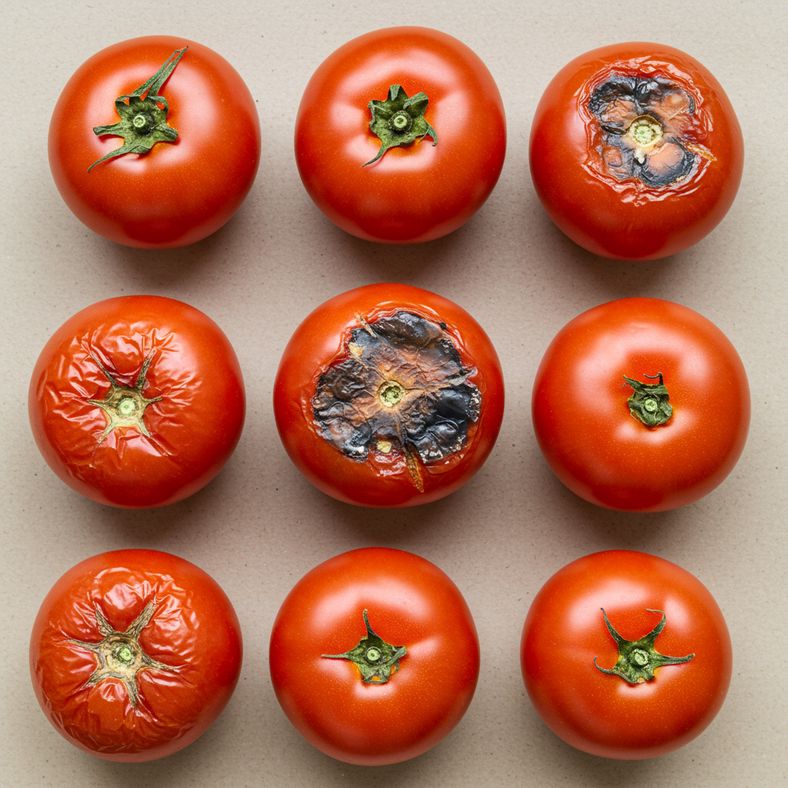
Even with the best techniques, green tomato ripening doesn't always go according to plan. Understanding common problems and their solutions can significantly improve your success rates.
Uneven Ripening and Yellow Shoulders: This occurs when tomatoes ripen from the bottom up, leaving green or yellow areas around the stem. It's often caused by high temperatures above 30°C or potassium deficiency. Move affected tomatoes to cooler locations and ensure they're not in direct sunlight.
Rot Development: Soft spots, fuzzy mould, or bacterial rot can quickly spread through stored tomatoes. This usually results from excess moisture, poor air circulation, or storing damaged fruit. Remove affected tomatoes immediately, improve ventilation, and check storage areas aren't too humid.
Failure to Ripen: Some green tomatoes remain hard and never develop colour or flavour. This typically affects immature fruits that were picked too early or varieties that require longer growing seasons. These are best used for green tomato recipes rather than continued ripening attempts.
Loss of Flavour: Tomatoes that ripen indoors often lack the full flavour of vine-ripened fruits. This is normal and unavoidable, as the complex flavour compounds develop best with natural sunlight and plant nutrition. However, properly ripened indoor tomatoes still provide good flavour for cooking.
Premature Splitting: Rapid ripening can cause skin to split, especially in varieties prone to cracking. Maintain consistent temperatures and humidity levels, and handle fruits gently during daily checks.
By understanding these challenges and implementing preventive measures, you can maximize both the quantity and quality of your successfully ripened green tomatoes.
Essential Tools and Supplies for Tomato Ripening
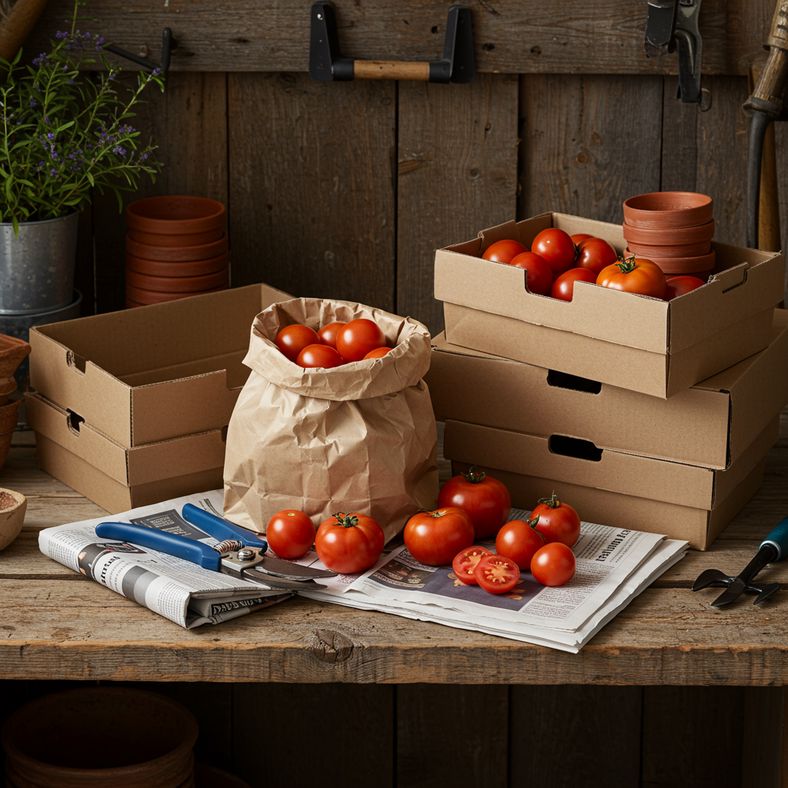
Having the right equipment makes tomato ripening significantly more successful and efficient. Most items are common household supplies, though a few specialized tools can improve your results.
Basic Supplies: Brown paper bags remain the gold standard for small-batch ripening, providing the perfect balance of air circulation and ethylene retention. Newspaper serves multiple purposes - lining storage containers, wrapping individual fruits, and absorbing excess moisture. Cardboard boxes or wooden drawers provide ideal storage for larger quantities.
Monitoring Equipment: A reliable room thermometer helps maintain optimal temperatures between 15-20°C. Digital versions with min/max memory functions are particularly useful for tracking temperature fluctuations overnight.
Harvesting Tools: Sharp, clean secateurs are essential for cutting fruit trusses and removing plant material. For whole plant harvesting, a pruning saw or loppers may be necessary for thicker stems.
Storage Enhancement: Kitchen paper or clean cloth helps manage moisture levels and prevents fruits from touching each other. Small mesh bags or breathable fabric pouches work well for grouping similar-sized tomatoes whilst maintaining air circulation.
Professional Enhancement: For serious tomato growers, consider investing in quality JiveSnip Premium Titanium Garden Secateurs for clean, precise cuts that promote plant health and reduce disease transmission.
Organization Systems: Label different varieties and harvest dates using waterproof markers and tags. This helps track which techniques work best for different tomato types and timing.
Disclaimer: This article contains Amazon affiliate links. We may earn a small commission from qualifying purchases at no additional cost to you.
Timing Your Harvest for Best Results
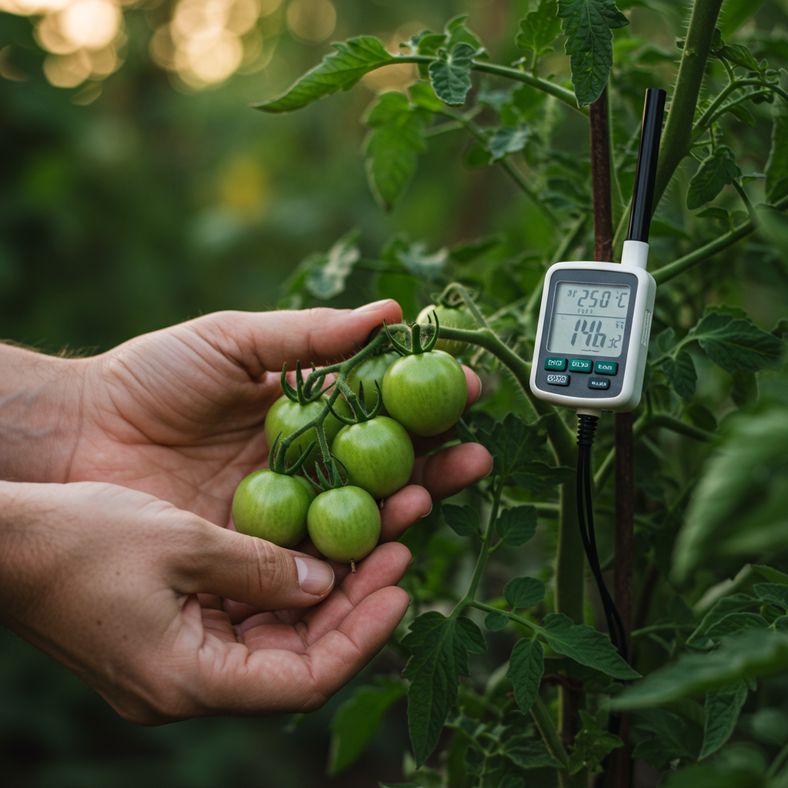
Successful tomato ripening begins with knowing when and how to harvest your green fruits. Timing is crucial for maximizing both the quantity and quality of tomatoes that will successfully ripen indoors.
Optimal Harvest Timing: In the UK, begin monitoring for harvest opportunities from mid-August onwards. Watch for nighttime temperatures consistently dropping below 12°C or daytime temperatures failing to reach 15°C. When weather forecasts show these conditions lasting more than 3-4 days, it's time to consider harvesting.
Fruit Selection Criteria: Focus on tomatoes that have reached at least 80% of their expected mature size. These 'mature green' tomatoes show a subtle colour change from dark green to lighter green, often with a slight whitish or yellowish tinge around the blossom end. Avoid small, hard, dark green tomatoes that haven't reached physiological maturity.
Daily Monitoring: Check plants daily during the critical August-September period. Weather in the UK can change rapidly, and an unexpected cold snap can damage fruits before you have a chance to harvest them. Early morning inspections allow you to assess overnight temperature effects.
Staggered Harvesting: Rather than harvesting everything at once, consider taking the most mature fruits first whilst leaving smaller ones for a few more days of plant growth. This maximizes the ripening potential of border-line fruits.
Emergency Protocols: If frost is forecast within 24-48 hours, harvest immediately regardless of fruit maturity. Even immature green tomatoes can be used for cooking, though they won't ripen to eating quality.
Proper timing can increase your successful ripening rate from 40% to over 80%, making this knowledge crucial for UK tomato growers.
Post-Ripening Storage and Usage
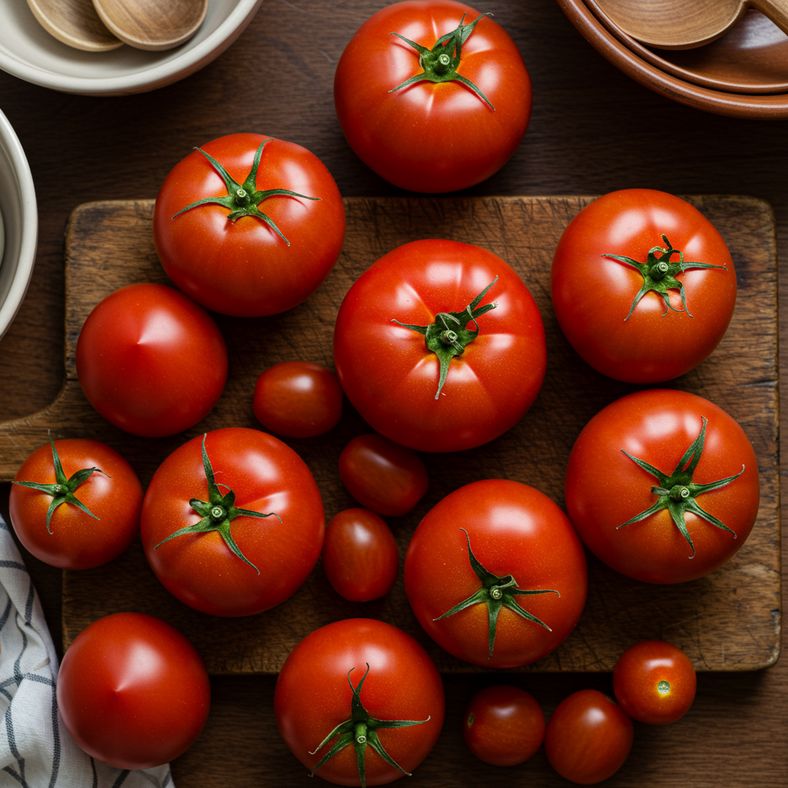
Once your green tomatoes have successfully ripened, proper handling and storage ensure you get maximum enjoyment from your harvest. Understanding how to manage newly ripened tomatoes differs from handling shop-bought varieties.
Immediate Assessment: Freshly ripened tomatoes should be used within 3-5 days for optimal flavour and texture. Unlike greenhouse-forced commercial tomatoes, home-ripened fruits have thinner skins and softer flesh, making them more perishable.
Storage Conditions: Keep ripened tomatoes at room temperature away from direct sunlight. Refrigeration stops the ripening process but also diminishes flavour compounds, so only refrigerate if you need to extend storage life beyond a week.
Culinary Applications: Home-ripened tomatoes excel in cooked applications - sauces, soups, chutneys, and stews. Their slightly different texture and concentrated flavour make them particularly good for preserving. Consider making tomato paste, which intensifies flavours and extends storage life.
Preserving Techniques: Freezing whole ripened tomatoes works well for later use in cooking - the skins slip off easily after thawing. Dehydrating creates intensely flavoured tomato chips, whilst bottling allows you to preserve peak flavours for winter use.
Recipe Adaptations: Home-ripened tomatoes often have higher acidity than vine-ripened fruits, making them excellent for pickling and canning. Their firmer texture holds up well in slow-cooking applications.
Seed Saving: If you've successfully ripened heritage varieties, save seeds from the best fruits for next year's crop. Allow fully ripe tomatoes to become slightly over-ripe before extracting seeds for optimal viability.